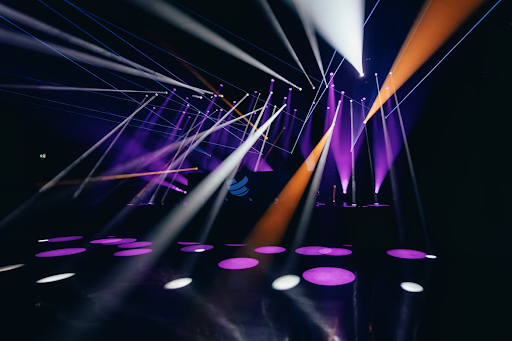Mastering lighting techniques is an essential skill for anyone involved in high-quality video production. The way you light your subjects and scenes can significantly impact the overall look and feel of your videos. Whether you’re shooting a film, documentary, corporate video, or any other project, understanding and employing effective lighting techniques can elevate your visuals to a professional level.


Mastering lighting techniques is crucial for achieving high-quality video production. As the team at Horizon Imaging noted, videos have the ability to not only capture the attention of consumers but also hold that attention and create a lasting connection or memory from it. In an age where the human attention span is shorter than ever, standing out from the crowd using lighting techniques is more important than ever.
Three-Point Lighting
Three-Point Lighting is a classic technique that serves as the foundation for achieving well-balanced and visually appealing lighting in video production using three light sources. The key light acts as the primary light source, illuminating the subject and setting the overall tone of the scene. It provides the main illumination, emphasizing the subject’s features and creating depth. The fill light complements the key light by softening the shadows it creates, ensuring a more balanced lighting setup. It helps to reduce harsh shadows and provides additional illumination to the scene. Lastly, the backlight, also known as the rim light or hair light, adds a sense of depth and separation between the subject and the background.
Natural Light
Natural lighting can be a powerful tool in video production, capable of creating breathtaking visuals when harnessed effectively (such as at “golden hour”). When using natural light, it is essential to be mindful of the sun’s position and the direction of light to control the overall look. Properly positioning the subject in relation to the sun can help avoid harsh shadows and ensure a more balanced and visually pleasing outcome.
Diffusion
Diffusion plays a vital role in video production by transforming harsh light sources into softer and more pleasing illumination. This technique involves the use of various diffusion materials, such as diffuser panels, silk or nylon fabrics, or specialized light modifiers like softboxes. These materials scatter and disperse the light, creating a more even and gentle illumination that minimizes harsh shadows and reduces the contrast between highlights and shadows. Diffusion is particularly beneficial for close-ups and interviews, as it helps to create a more flattering look by softening skin imperfections and providing smooth, even lighting across the subject’s face.
Reflectors
Reflectors are used to bounce light back onto the subject, effectively filling in shadows or adding a subtle kick of light to enhance the overall illumination. Reflectors come in various colors, each with its own unique properties, such as gold for creating warmth or white to offer a flattering effect. By skillfully utilizing reflectors, videographers can shape and manipulate light to achieve the desired look and enhance the visual appeal of their videos.
In conclusion, mastering lighting techniques is a fundamental aspect of high-quality video production. Whether you’re utilizing three-point lighting, harnessing the beauty of natural light, employing diffusion to soften harsh lighting, or using reflectors to control the bounce of light, understanding these techniques empowers you to create visually captivating videos.
Interesting Related Article: “A Quick Way to Trim LED Lights“
